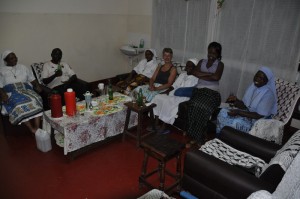Our last full day in Kenya was quite low-key, thanks to Kenya Poor. The blackout started early and, having completed yesterday’s blog entry and processed some photos for Barnabas, my battery was flat, so any plan to do some last-minute website updates went out the window..
Catherine, her mum, and Eunice came bearing gift to wish us farewell, not long before Joe came to collect us for lunch. We prayed together before parting.
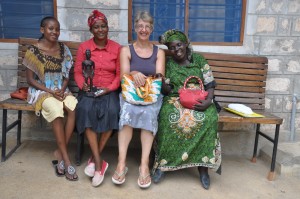
Joe took us to Kikambala for lunch, a White Cap, and a postprandial snooze. Then we went to Blue Sky to sit in the garden, sip sodas, and then take a final walk on the beach and paddle.
Meld’s first selfie?
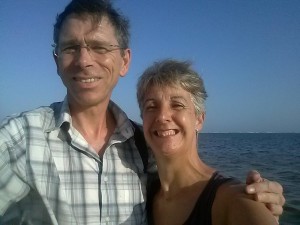
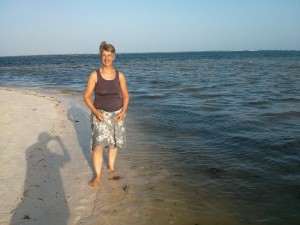
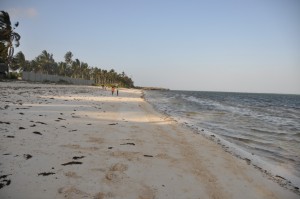
Then back to Shanzu for a farewell supper with the extended family. We gathered outside the house in the falling light.
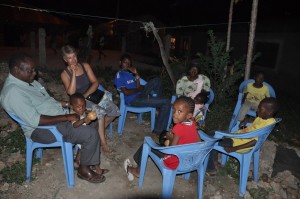
The food is ready.
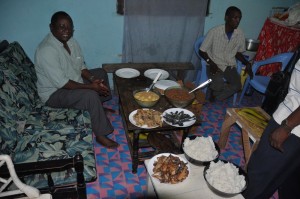
Maggy complained about the cold.
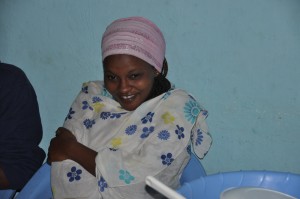
Some of our hosts
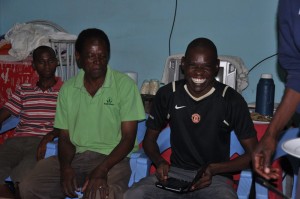
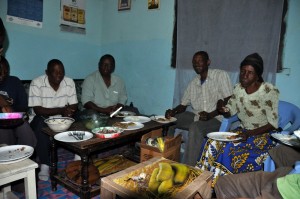
Tucking in
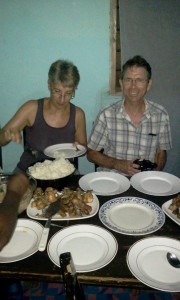
Grace rests after cooking and serving
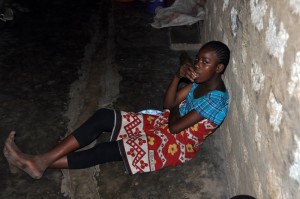
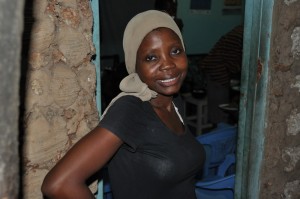
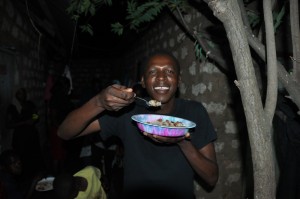
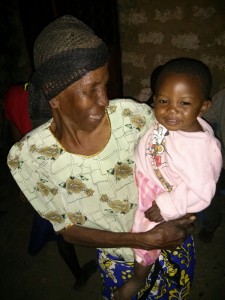
Today was Imelda’s last day at Barnabas (we felt we needed a clear day to get ourselves organised before travelling home), so I was also invited to join them for lunch and the afternoon farewell ceremony.
First, we took a look at the new temporary classroom
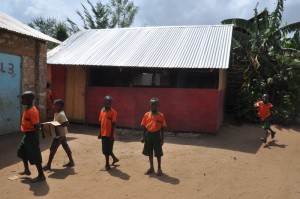
It still needs a concrete floor.
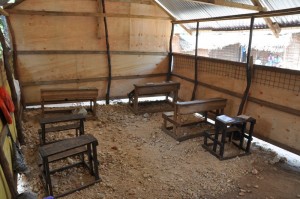
The house mothers were busy cooking lunch… chapati…
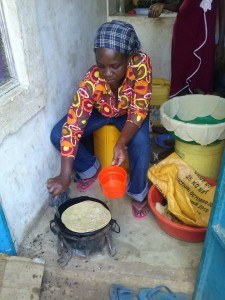
…and pilau…
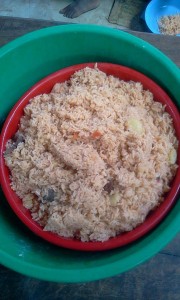
The kids line up to wash their hands, the big ones helping the little ones.
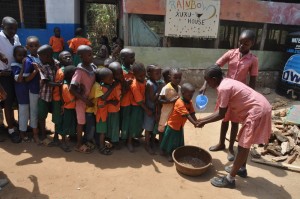
With Edu, the Danish volunteers and some visitors from Action Aid, we were treated as VIPs, seated with the men teachers. (Imelda in particular would have liked her female colleagues to eat with us, but that’s not the Kenyan way).
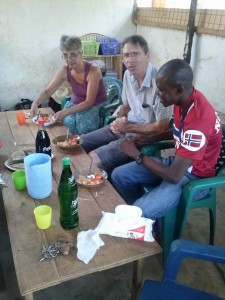
Silas shares some pictures with the kids.
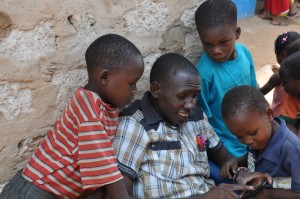
Lunchtime
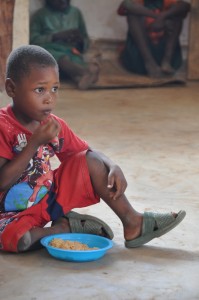
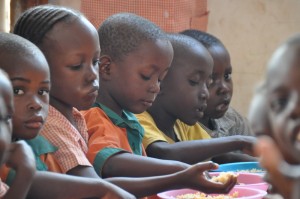
After lunch, and showing Harrison the new version of their website I’d built (I’m getting to love WordPress!!) the kids were lined up outside to say farewell
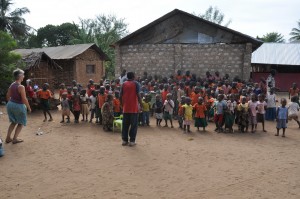
The reaction to “Hands up if you love teacher Imelda” (her class 4 are the back row)
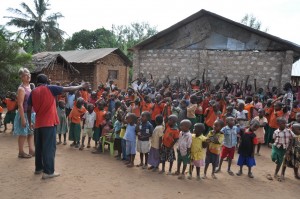
Singing and dancing
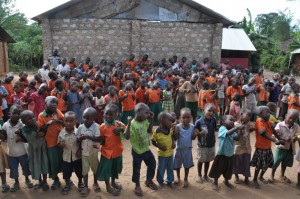
An action song (like Father Abraham if you’re a pilgrim!) – here it’s “tongues out” and Teacher Rose and her daughter Eva were caught!
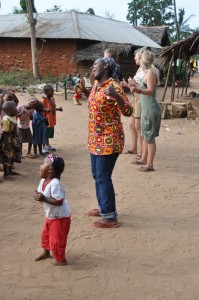
Headteacher Harrison on “turn around”
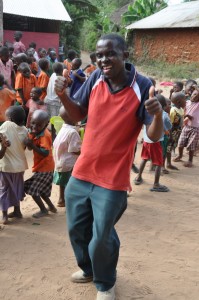
Class 4 group hug Teacher Imelda
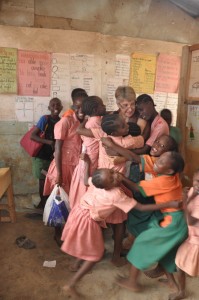
Au revoir Harrison
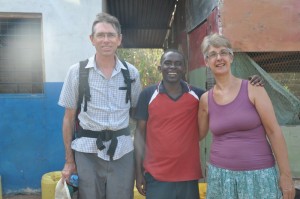
We were escorted, by Class 4 and others, to the road, where they waved us off as we left in the matatu.
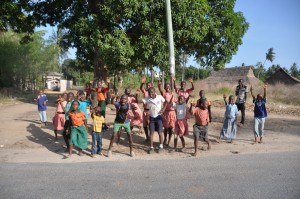
Barnabas, kids and staff, we will never forget you.
Our last Sunday in Kenya was spent at Kikambala. For once we made an early start and were at the 7am Mass (which starts at 07:30). There were thanks to us for raising the money to roof the house (and more), and exhortations to the parish to dig deep to finish it off.
The main items remaining are floors, decoration and louvres. The ceilings are now complete throughout.
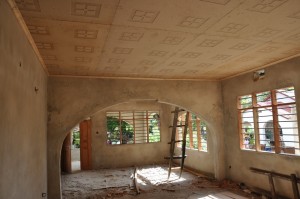
The wiring is complete, but switches and sockets need to be fitted.
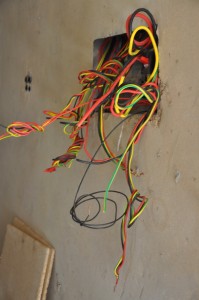
The youth were prettifying the grounds.
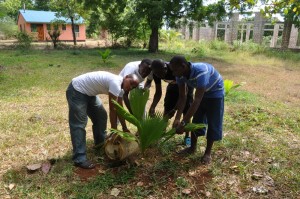
And the choir were meeting
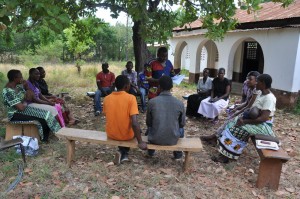
Team Youth
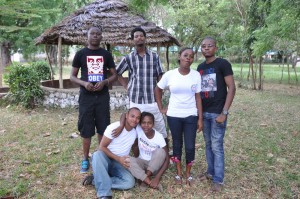
The ladies were preparing a feast for lunch
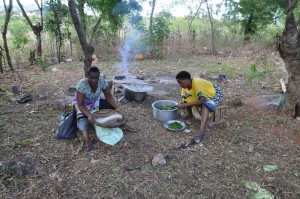
And washing the vestments
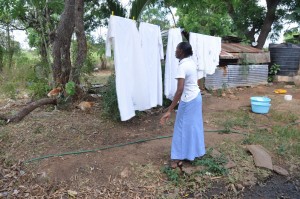
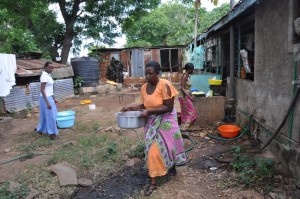
Meanwhile we walked to the beach and sat under a tree, letting the world pass by.
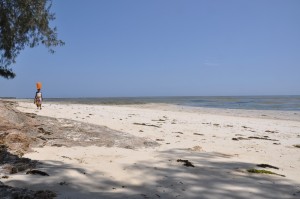
Hello Mr Crab
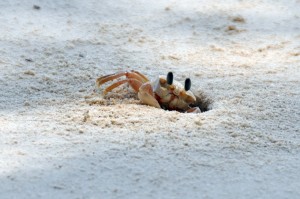
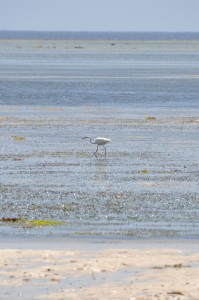
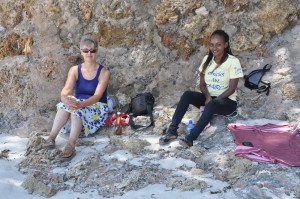
We walked along to Sun’n’Sand Hotel for a drink
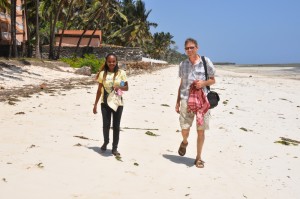
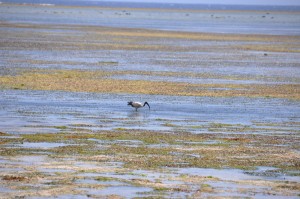
Back at the church, lunch was served and we sat with the youth
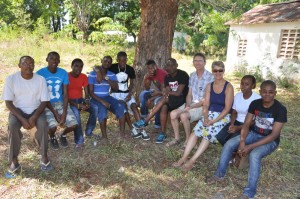
Then Jacob drove us to the beach as the tide was returning.
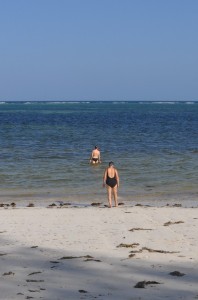
Posing girls
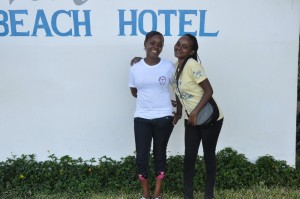
While we drank our post-swim drinks we saw a lot of birds in a nearby tree, Suddenly they all flew out…
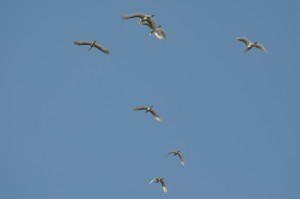
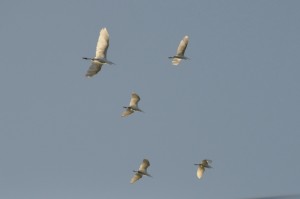
Today was the day of our big farewell party, to which we’d invited pretty much everyone we know in the area – all of Joe’s extended family, staff and volunteers from Barnabas, members of Okoa Jahazi, friends from Mivumoni…
I started the day by making mandazi ( a kind of dough nut, made with baking powder rather than yeast, and shallow fried). They weren’t bad (and they were all eaten, many by the cooks preparing our feast).
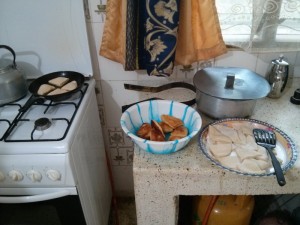
The first cooks, Cecilia and Selina, arrived and built a couple of fires. There’s a specific technique with 3 rocks to support the sufuria (cooking pot) and the wood inserted between so that the fire can be kept even by pushing the pieces of wood into the centre.
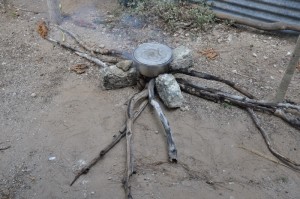
Meld landed the job of peeling 15 large garlic bulbs.
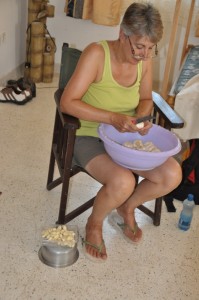
The ladies worked on the back porch, behind the kitchen.
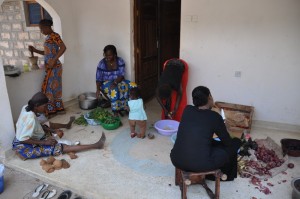
Selina crushes garlic.
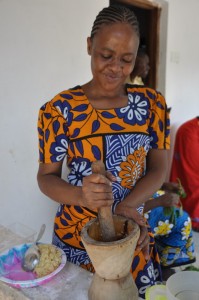
Sarah works and holds Angelina
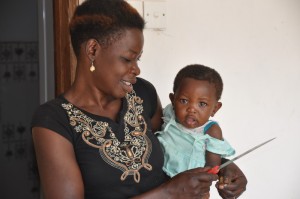
Early guests
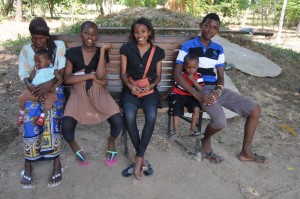
Edu brought a friend, Rahma (you’ll also see her in the back porch shot above).
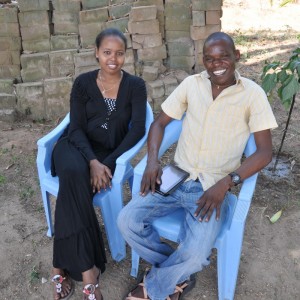
Cecilia stirs her pot.
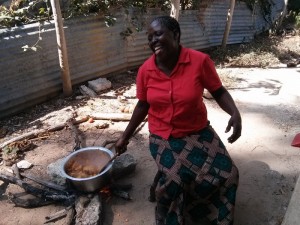
Baby Tina has grown, but maybe not as much as we’d expected.
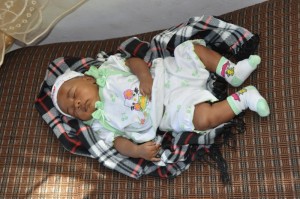
Tina and Ngala
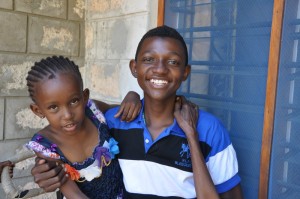
Meld and Gracie share a joke.
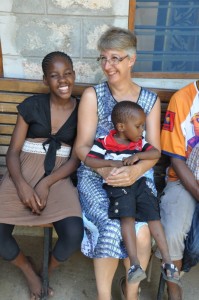
Chatting whilst waiting for the food to be ready.
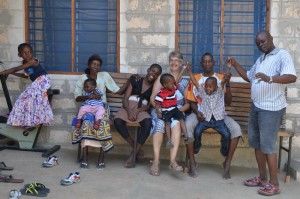
The ladies of Okoa Jahazi enjoy a Smirnoff Black Ice.
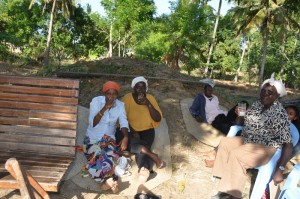
The two Danish volunteers at Barnabas chat to our local friends.
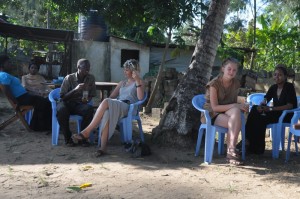
Robert looks happy.
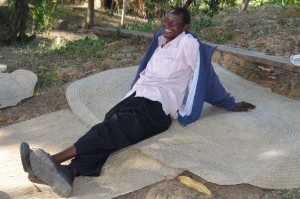
The kids are served their food.
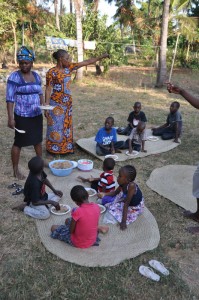
Eunice is happy to be fed.
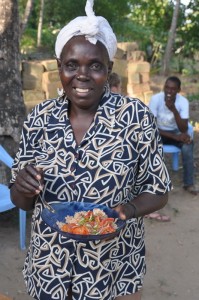
Tuck in there’s lots for everyone!
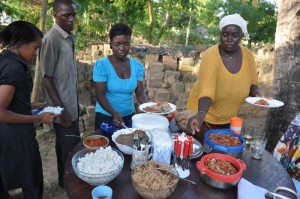
Maggy and Meld
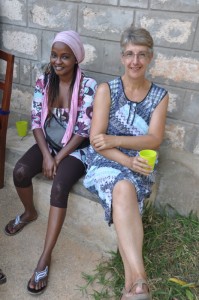
Silas
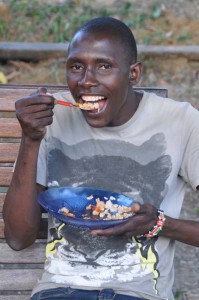
Mary and Gloria
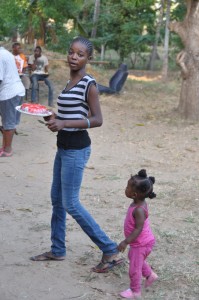
Before lunch some of the men had erected two garlands, and chairs were placed by them. We started taking photos…
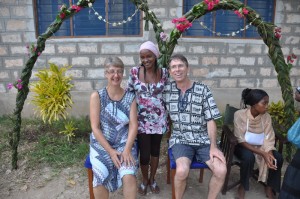
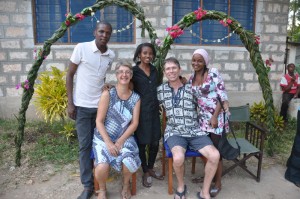
But we were told we were improperly dressed, so we were taken inside, dressed, and returned as Giriamas.
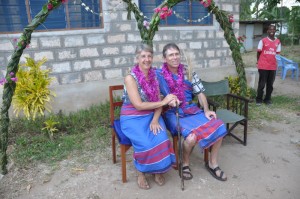
It then became something like a wedding, trying to get pictures of us with everyone! With Samuel and Joe.
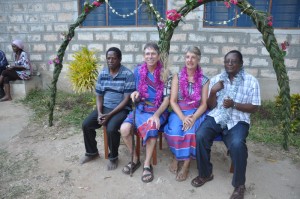
With Joe’s siblings
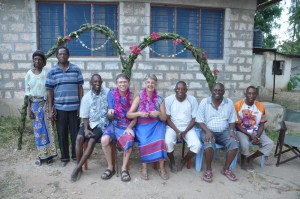
With Joe’s sisters-in-law
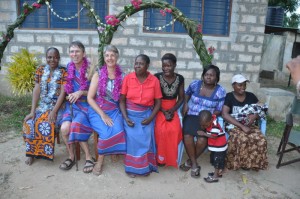
With some of the next generation
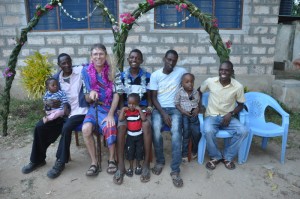
With the Barnabas team.
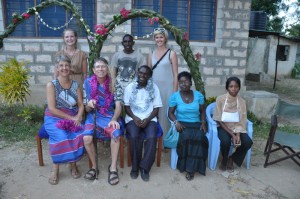
With Okoa Jahazi
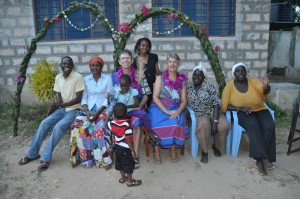
Me with Jacob
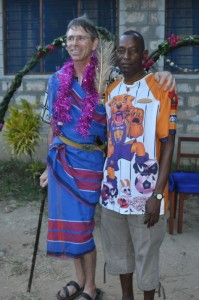
The Danish visitors were dressed up too.
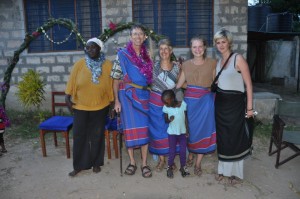
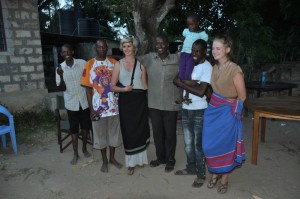
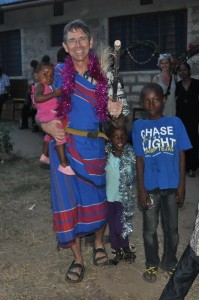
Kids having fun
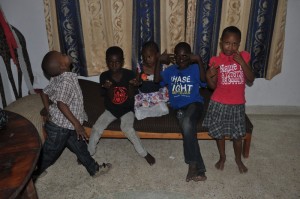
And gradually everyone departed. Quite a day…
Meld wanted to make some lemon drizzle cakes for tomorrow, and Eunice came to learn how to make them. Robert and Faith helped too.
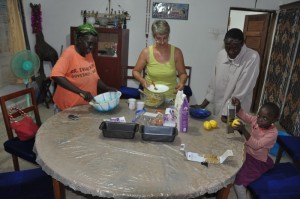
Robert checking consistency
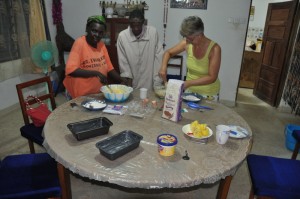
Faith had a rest
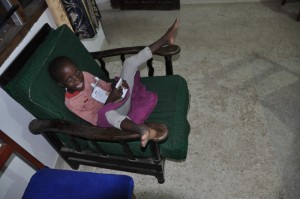
Teddy, who lives with Eunice, dropped by for a while.
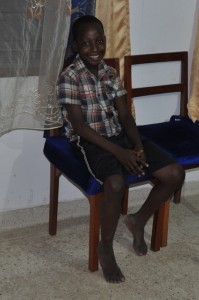
With the cakes in the oven, and maharagwe na wali (bean stew and rice) cooked, I prepared mchicha (one of many Kenyan greens, similar to leaf spinach).
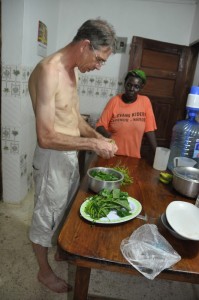
A boda boda turned up with food from Samuel for the party, then returned with more food plus Samuel himself. Jacob spread the contents to stop them sweating overnight.
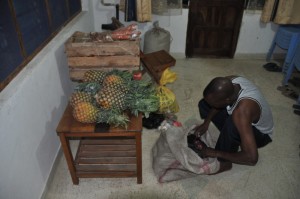
As the end of our trip approaches we’ve both been quite busy: Meld being Class 4 teacher at Barnabas, and me trying to complete updates to websites and various admin tasks around and about.
On Tuesday I went to Barnabas to see Harrison’s laptop, and managed to get a photo of Imelda’s shy colleague.
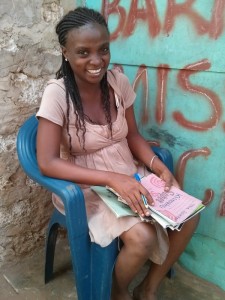
Back home, the reduced dog family welcomed us.
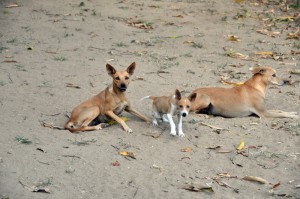
On Wednesday Imelda finished early and we went by boda boda (motorbike taxi, also know as piki piki) to the Transitional Workshop for Disabled Young Women at Shanzu. We didn’t realise that Selina worked here, although she was not there at the time. They make a wide range of products from kikoy fabric…
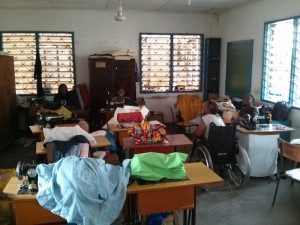
…and sell them in their shop.
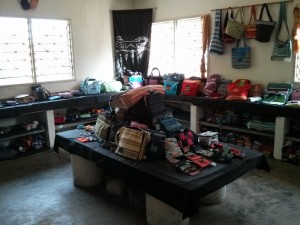
We then went on to Kikambala for a lovely supper with Coralis.
Thursday’s main adventure was a shopping trip in Joe’s truck to Nakumatt to buy sodas for our party on Saturday.
Friday found Shanique hitching a ride in a hand cart
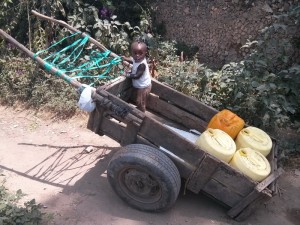
And Imelda teaching drawing
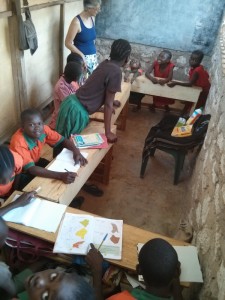
Martin and the boys have been clearing the grounds for the party tomorrow. Martin and Shariff disappeared, and came back with a crab!
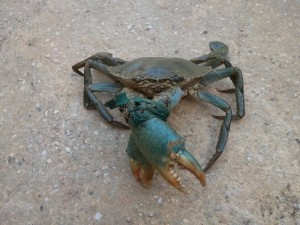
Sadly the crab was only to look at, as they’d also brought its owner!
Unusually for January, the nights are a bit cool here – you certainly need a sheet over you in bed – maybe it’s preparation for going home!
It’s not supposed to be a long farewell, but the past couple of days have started to feel a bit like it!
Sunday, after Mass, we went to Boko Boko, treating Fr Joe and Deacon Joseph in return for the many meals we’ve shared with them at Kikambala. Yolande, the owner, came and talked to us after the meal. I’m sure we’ll sneak back there once more before we go home!
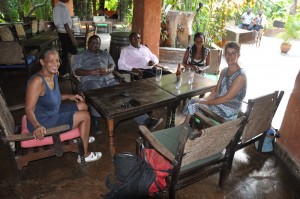
These two musicians serenaded us with an eclectic range of songs.
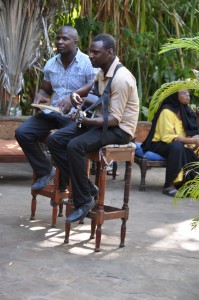
Then on Monday we went to Joe’s rural home. Our last opportunity to visit this trip.
Two of the puppies, Rodney (a girl) and Lou (a boy) are moving there, and Martin made them a box to travel in.
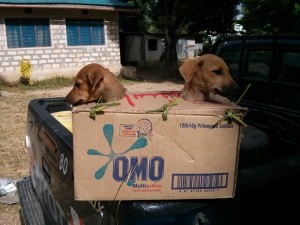
First, and most important, task was to greet Joe’s mum. She’s ailing, and often doesn’t remember people, but at Christmas asked why we were not there!
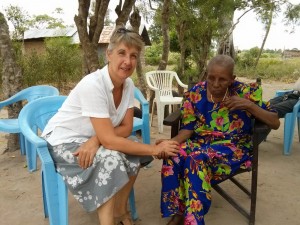
The tent, used for the memorial service and at Christmas, was dismantled.
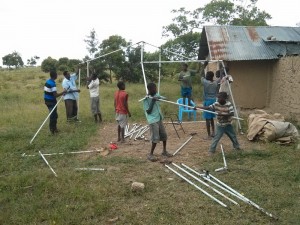
Joe’s truck had a puncture a couple of weeks ago, and the rather worn spare was still on with the repaired wheel in the back of the truck. I suggested that we should swap them back, and somehow landed the task for myself (assisted by Martin and encouraged by a typical African crowd).
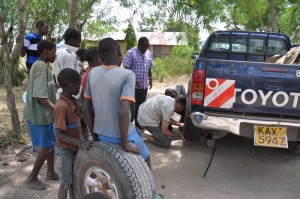
Replacing the spare – I love how all the kids bent down to see this happen!
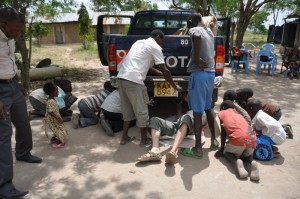
Truck fixed, i inspected the sukuma wiki preparations
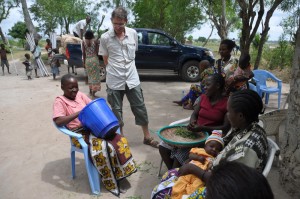
Joe’s aunt and one of the children.
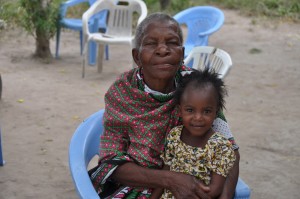
It’s the mzungu baby thief again
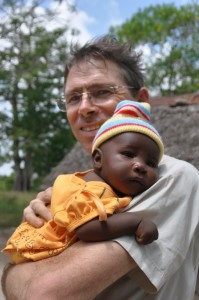
Lunch – Patrick’s never late!
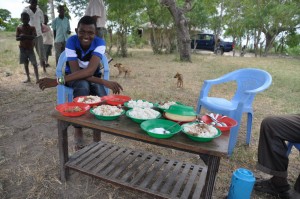
More of the family and kids
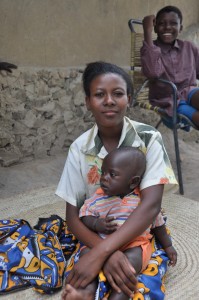
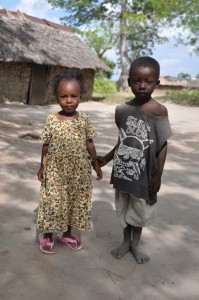
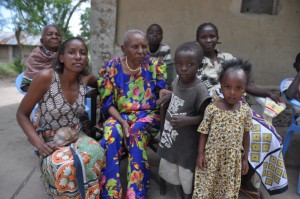
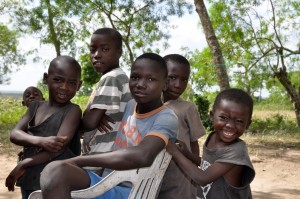
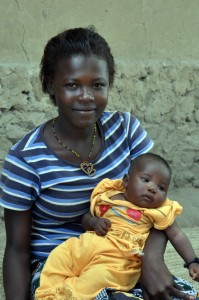
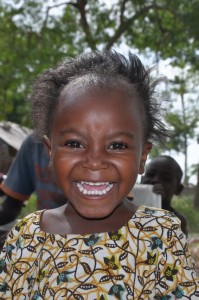
Meld and Joe start a school

It’s quite green up here – not as dry and dusty as Mombasa
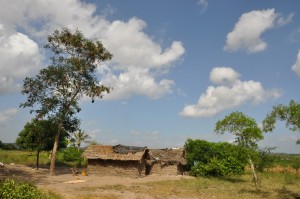
Eliza opens coconuts – don’t argue with her when she has a panga, she’s got a killer stroke.
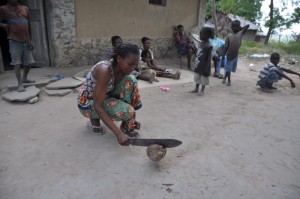
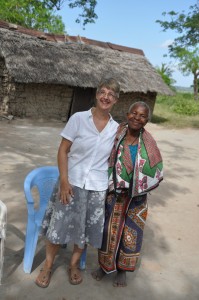
Back to normal tomorrow…. school, laundry and websites!
We took a matatu to town and walked to Fort Jesus, looking across the creek to Nyali.
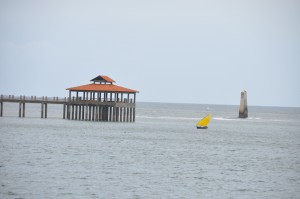
The coast has suffered erosion.
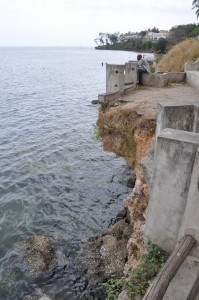
Me and the fort.
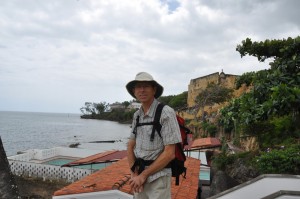
The fort without me! (Well, part of it)
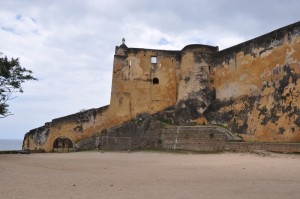
Roundabout outside Fort Jesus with tea or coffee pot and cups – supposedly indicates that Old Town is an alcohol free area.
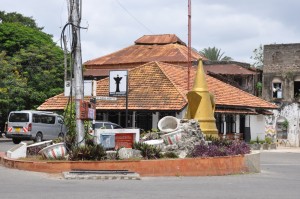
We took lunch at Jahazi Coffee House, where the friendly cats sleep.
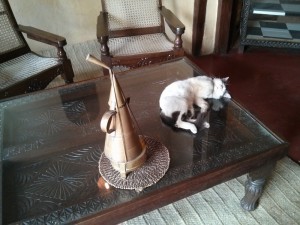
Along the road through Old Town
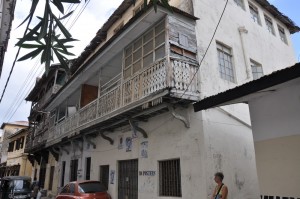
We visited several curio shops and bought a few souvenirs, after bargaining.
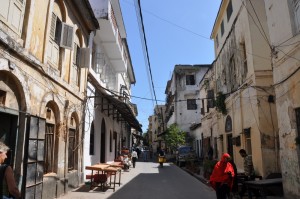
Then a rapid tuk-tuk ride to the ferry to meet Lucy, on her last day in pwani before heading to Eldoret at 5am Sunday.
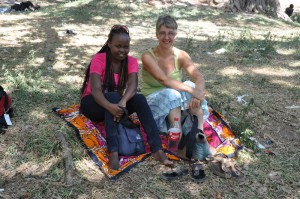
Posers.
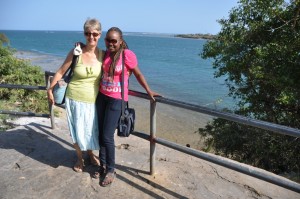
The ferry in the late afternoon sun
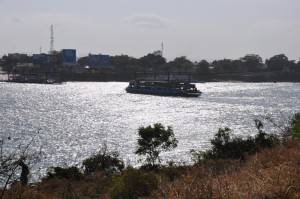
Hordes of people make their way onto the ferry, passing the Italian aircraft carrier Cavour, here on anti-piracy patrol we presumee.
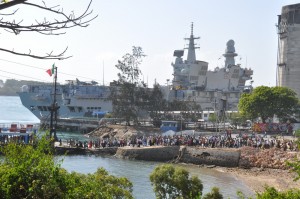
From the ferry we took a very bumpy matatu to Bamburi to meet Harrison, headteacher at Barnabas, and join his family for supper. We had a lovely time, and discussed school and their website.
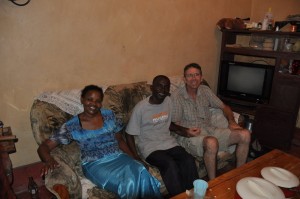
Cat pillow
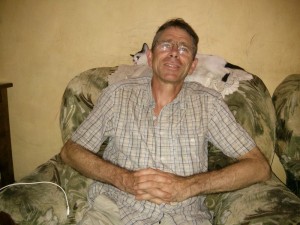
I went up to Barnabas School on Friday afternoon to meet Meld and also to see progress with the new interim Standard 4 classroom (current Classes 2, 3 and 4 are in one room, with a thin board partition separating Class 4).
The frame is mostly up, and most of the roof sheets are on (they need a bit more money to buy the rest of the sheets).
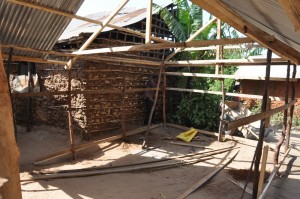
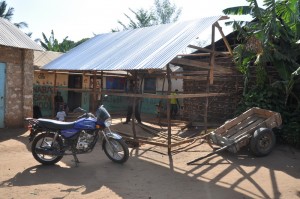
Putting in the last upright.
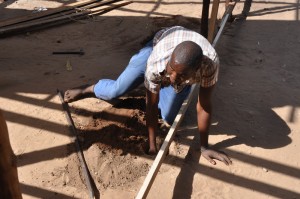
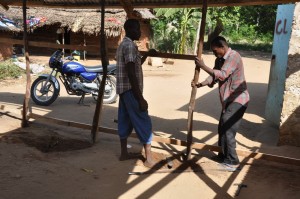
The classroom will have plywood half walls and a concrete floor.
Meanwhile this is the Class 4 room, with mwalimu at the back.
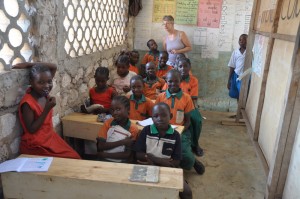
Meld and most of her 12 students (and a couple of others hanging on!)
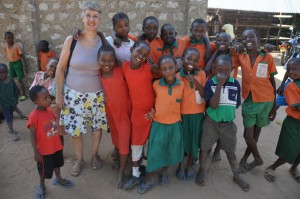
With 2 of her lady colleagues.
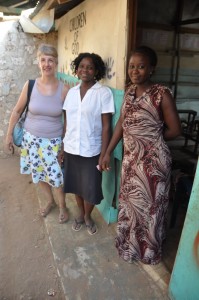
Having procured the new power supply yesterday, I had the computer up and running again (using the PV solar system). The new power supply works like the old one – it is small and runs pretty hot (it did in UK). Here, in ambient temperatures of 30°C it gets untouchably hot. This almost definitely contributed to the demise of the original, and I don’t want a repeat. The question was, how to keep it cool when there was no power to run a fan?
My immediate thought was to construct a heatsink. Phase 1 one to strap the transformer tightly to the metal colander – I know from experience of draining pasta that it conducts heat far too well! And the holes should aid cooling.
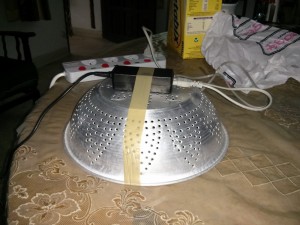
With this set-up, the colander got hot quite quickly so I thought we needed something else, if only to raise the colander into the airflow more. So I placed the transformer and colander on an inverted sufuria (cooking pot),
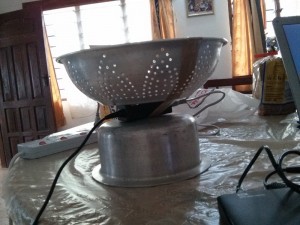
Despite the sufuria not having a flat bottom (they are really designed for use on wood fires or charcoal jikos) it soon got quite warm, and the colander also was warm enough to know it was working as a heat sink.
I’m glad to report (a) that the power supply is still working well and (b) now that the laptop battery is fully charged and the power supply is just ticking over, heat is less of a problem.
So now, back to my various web projects….
Electricity in Kenya is supplied (intermittently) by Kenya Power and Light Company – fondly (?!) known “Kenya Power and Darkness” or “Kenya Poor”. On Tuesday afternoon the power was off and on, and I mistakenly left my laptop plugged in to a wall socket (without surge protection) and at some stage the internals of the power supply melted and fused the plug. Careless mistake on my part, left with 2 hours battery to last over 2 weeks unless I could find a replacement.
So I contacted Edu, who said he knew a place in town that might have what we needed, if I could join him on a visit first, so late Wednesday morning I met Edu and Noelia and we went to pick up a boy called Juma (front) and his mum to take them to Barnabas School.
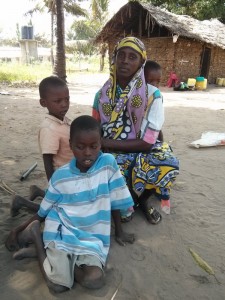
On of Juma’s brothers.
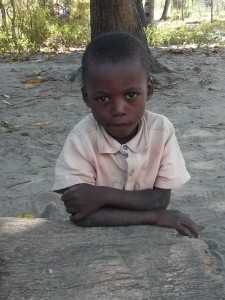
Ready to go to school.
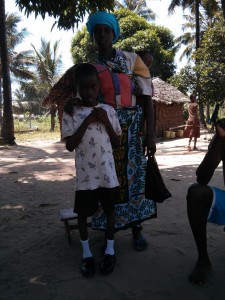
So by foot and matatu we all headed to Barnabas. While Juma was interviewed by Harrison, I disturbed the Class 4 teacher.
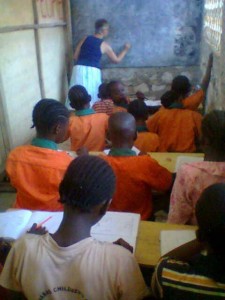
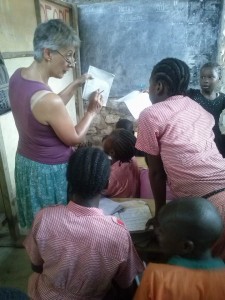
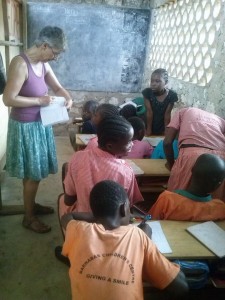
During the lunchbreak we inspected the new classroom being built to give room for the Class 4.
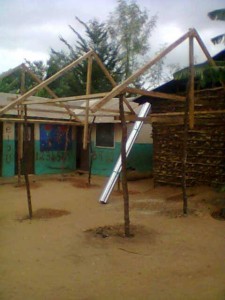
Saying farewell to Barnabas, we took 2 matatus via Bamburi to Mombasa town, where Edu visited a friend (running a graphic design and print service) who took my laptop and the dead power supply and came back a little later saying the place next door had one for 2,500 KES (under £20). We had quite a wait while the item was retrieved from store, then a hunt for the socket-to-transformer cable (the new adapter, genuine Samsung of the correct rating, had a 2-pin input rather than 3-pin).
By now we were tired, thirsty and hungry, so we headed to the Old Town.
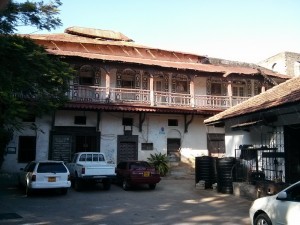
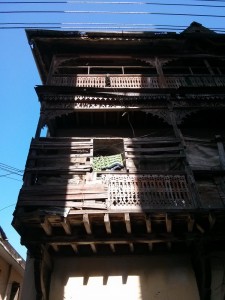
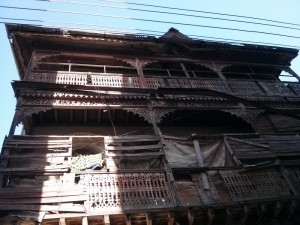
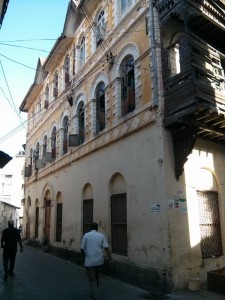
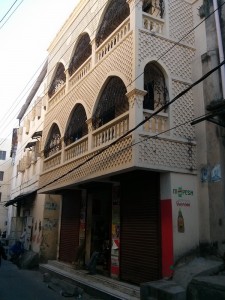
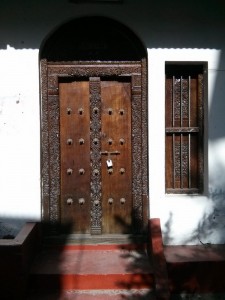
Eventually (mainly because Noelia and I kept stopping to take photos!) we reached Edu’s favourite haunt, Jahazi Coffee House.
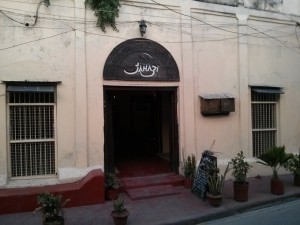
It’s a cat-friendly place.
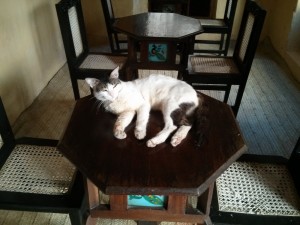
Snacks and drinks
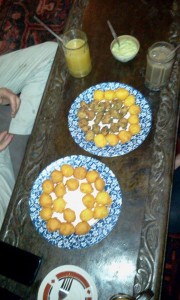
Edu made himself at home.
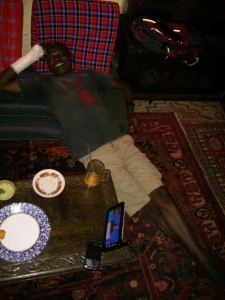
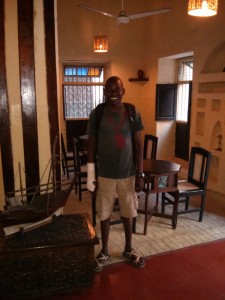
And I found a purring puss
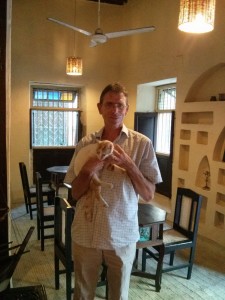
From Jahazi we headed to the waterside by Fort Jesus (about 100 metre walk) and took the view.

Then, leaving Noelia to meet a friend, Edu and I headed back to Shanzu.
Now you can see the evidence that the power adapter is functioning… and the electrician is here fixing the house electrics (I’m connected to the solar).
Marius, the Norwegian intern who has been here over Christmas, was leaving this evening, so a party was planed in his honour. Marius has been a great hit here, working hard with the special school and Barnabas orphans.
I visited during the day when preparations were under way. Gloria was in the bath…
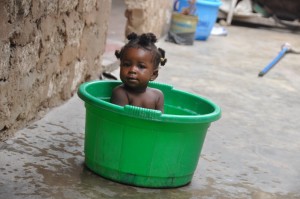
And Shanique hopped in with her, fully dressed!
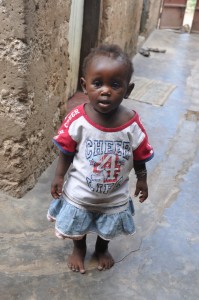
We got spruced up and joined the party in the evening. Lydia is not yet used to Jacob’s extended family!
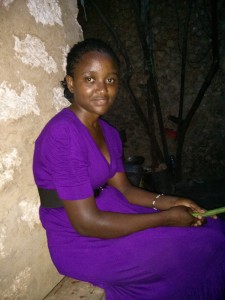
Shanique loves an audience
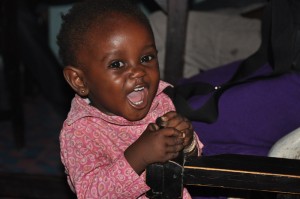
Marius was given a cake – naming him “MJ Charo”, i.e. one of the Charo family.
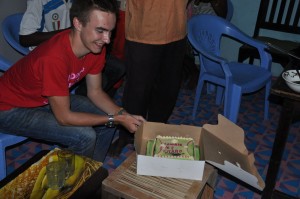
The tradition is that he has to feed everyone cake, then be fed by everyone,with much chanting!
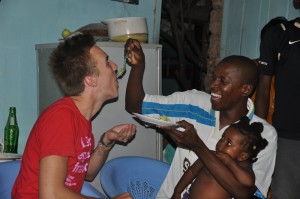
With his new wazazi (parents)
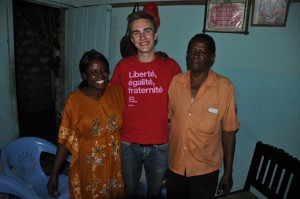
With the whole family, and new intern Noelia
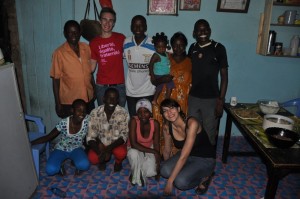
The Charo Brothers
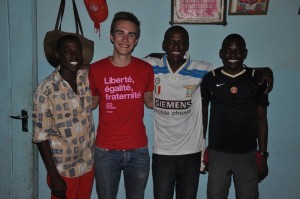
Fed by mama
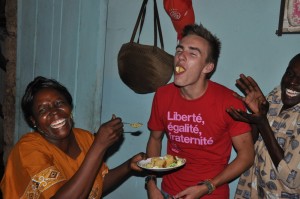
And then, everyone departed to see Marius to the stage on the way for a night flight to Nairobi (first of 4 flights over 48 hours to reach the Arctic circle in northern Norway – that WILL be a shock to hs system!)
Fr Joe works a 3-weekly cycle: Week 1 he says Mass at Kikambala, Barani and Bomani; Week 2 at Kikambala, Vipingo and Kolewa; Week 3 at Kikambala, Vipingo and Shaurimoyo. (See map). So, over the 10 weeks we’ve been here we should have visited all the outstations at least once. But 3 weeks ago there was no Kolewa mass (the big Legion of Mary event at Vipingo), 6 weeks ago we were in Eldoret, and 9 weeks ago we stayed for Mass in Shanzu. So today was our last chance to visit Kolewa.
We were enthroned at the front!
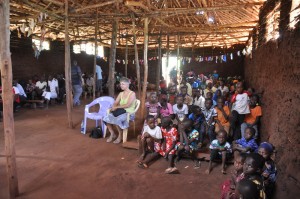
The choir were wonderful, no electronic organs, just drums, karamba and voices.
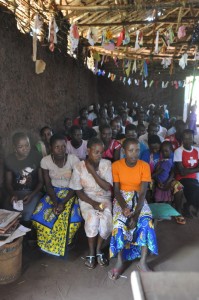
It’s quite a big, traditionally built, church. The makuti roof makes it the coolest of all of the mass venues, but the dark mud walls and bright sunlight outside makes it challenging for photography.
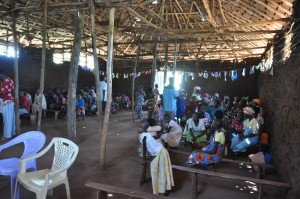
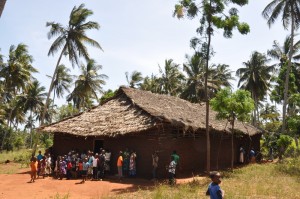
After lunch we walked to the beach, the men swam, and we took drinks at North Coast.
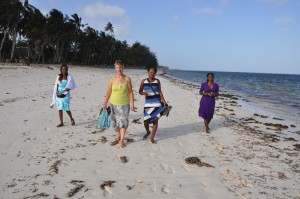
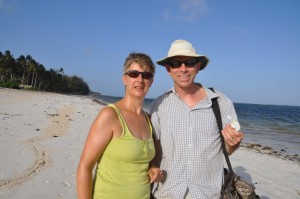
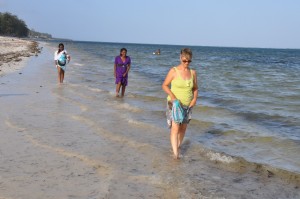
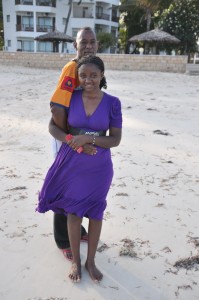
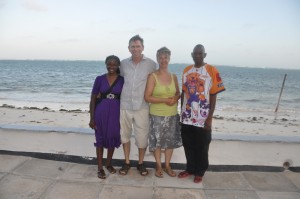
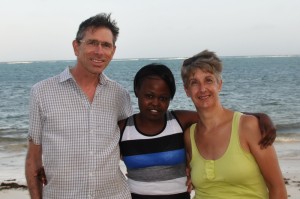
Friday afternoon Joe came and collected us and drove us to Kikambala, then we went to North Coast for a swim – the tide was actually HIGH!
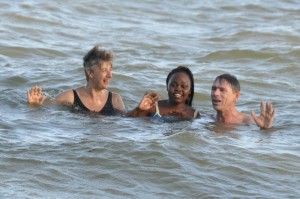
After Swimming drinks.
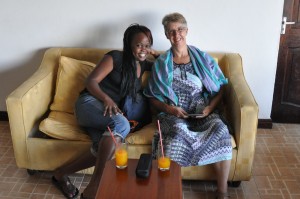
The hotel has Christmas design painted on the walls.
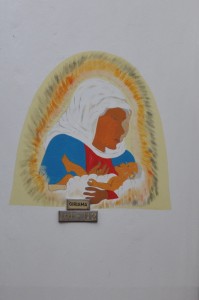
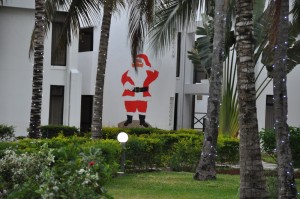
Lucy and her maasai boyfriend
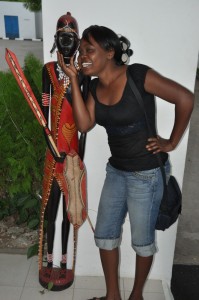
On Saturday we went to Bombolulu Workshops and Cultural Center. This is a mijikenda kaya
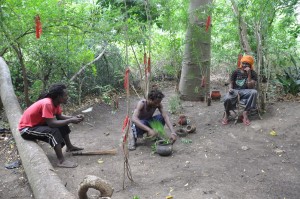
In the Luo homestead.
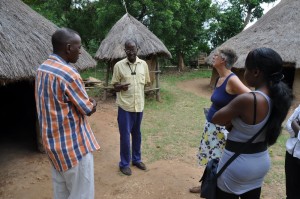
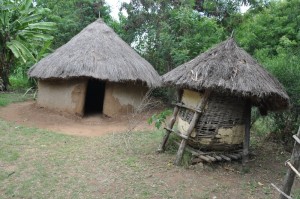
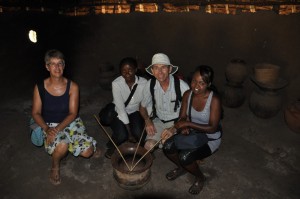
Lucy looks for her Maasai boyfriend
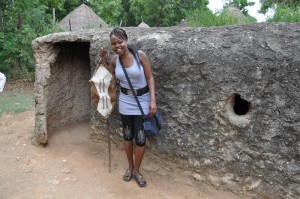
And Lydia tries too
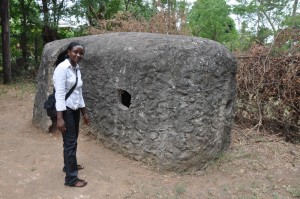
In a Luhya home
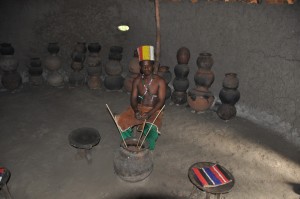

Making Giriama music
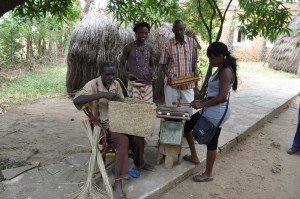
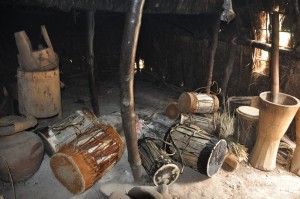
In the Swahili house, not very elegant but surprisingly comfortable
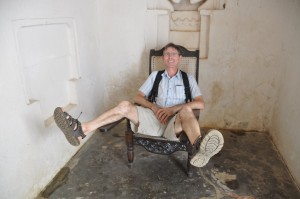
Thank you Lydia
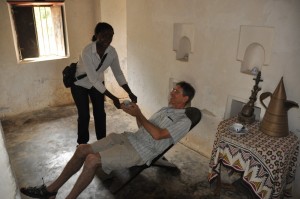
Swahili bed
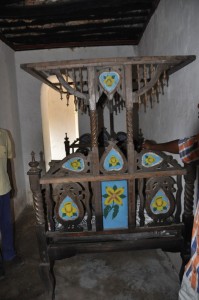
Jacob and Lydia
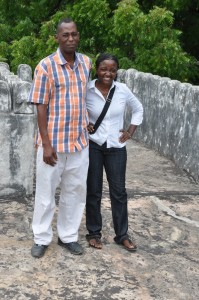
The traditional dance show
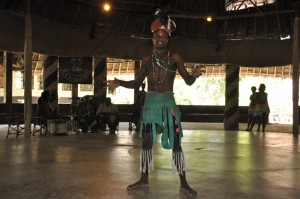
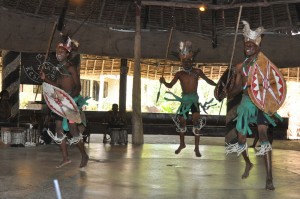
Time to join in (badly)
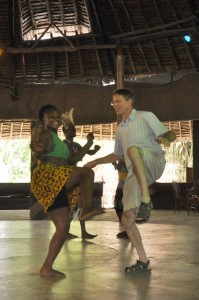
Meld escaped the dancing, but Lucy got her with a hat
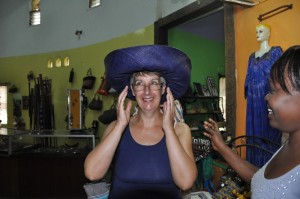
Farewell
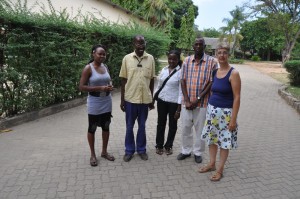
On the way home (via Nakumatt) we bought a plant – seemed like a good idea, but it was rather heavy and we had a mile to walk!
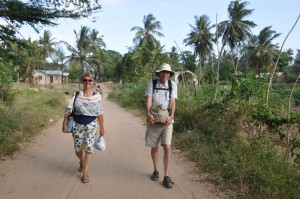
Back home, treating the puppies for ticks with big dollops of Vaseline
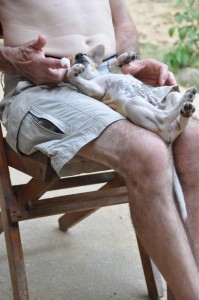
Today we collected the desks that Martin has been making for us and delivered them to Barnabas School.
The desks were ready in the workshop.
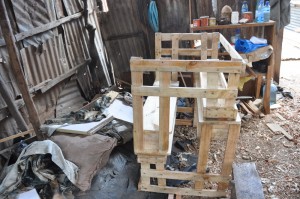
Carried out to the road
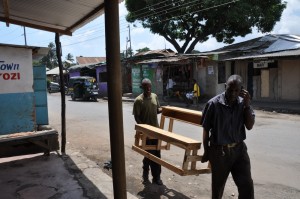
Loaded into Joe’s truck
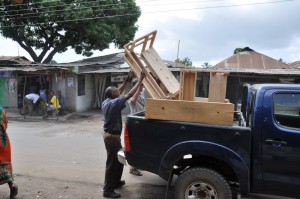
Driven to the school and unloaded
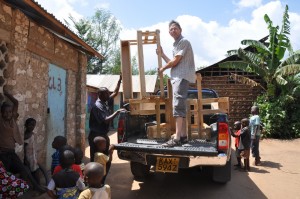
Tried for size outside the classroom
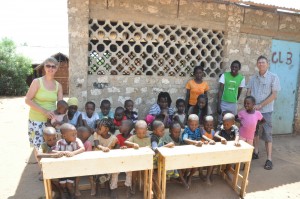
Moved inside
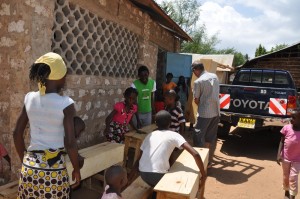
With a crowd watching
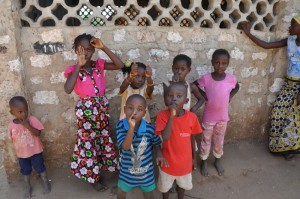
Tried out inside with Meld teaching
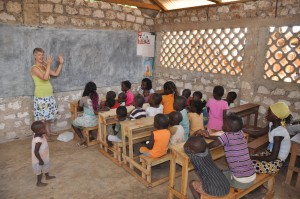
Counting in kiswahili?
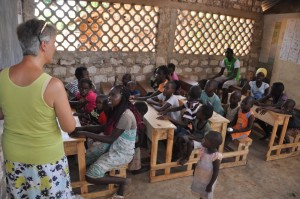
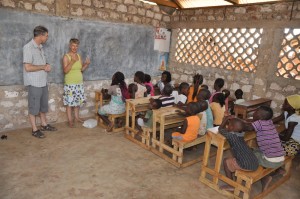
Chatting to teacher Silas before we returned the truck to Joe.
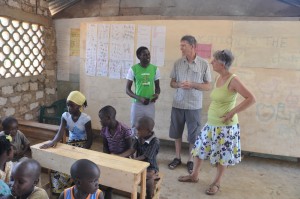
New Year’s Eve morning we visited Martin to see progress on the desks for Barnabas School.
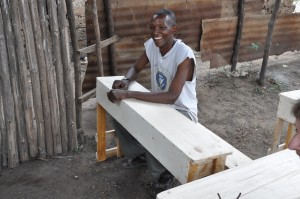
We all had to try them for size.
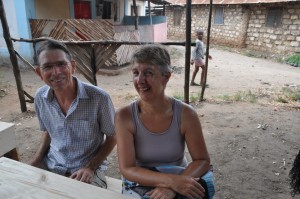
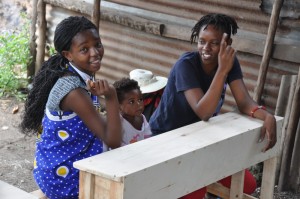
Back home, Meld had a visit from a horde of local kids who know her from Fumathoka School next door – she always said she’s never work at a school close to home…
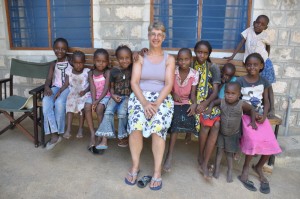
In thee evening we went up to Kikambala for a New Year Vigil mass, after which they burnt a scarecrow to symbolise the end of last year’s ills, wiping the sate clean. I think Joe in not keen on this “witchcraft”, so it happens after the mass.
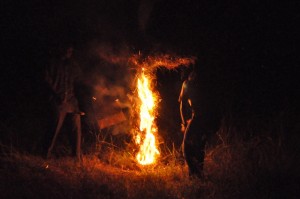
After Mass we went to Boko Boko (the Seychelles Restaurant) for a family party. The tables were arranged around a pool, and the kids danced across the walkway.
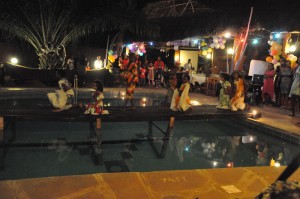
The kids loved showing their moves.
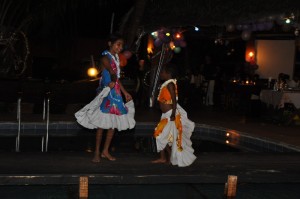
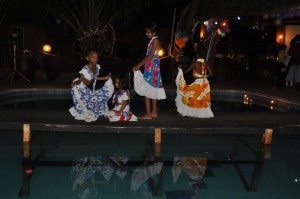
One boy did a hilarious dance wearing a Barack Obama mask.
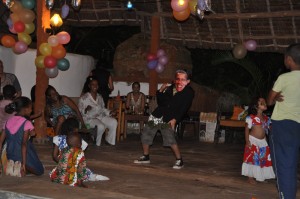
The dancers got bigger.
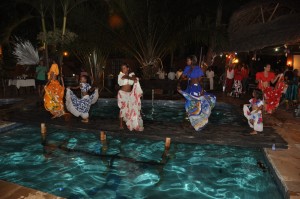
Meld was encouraged to join in
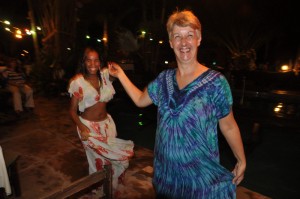
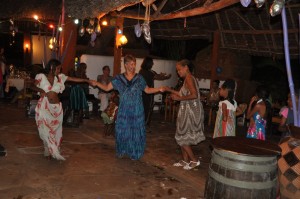
Our group: Med, Yolande (our hostess), Lucy, Deacon Joseph, Coralis, Fr Anthony, Fr Joe.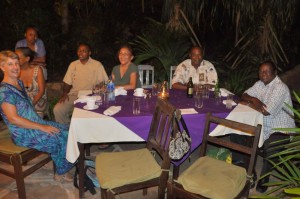
A performance for our table
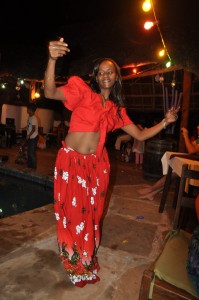
Lucy and Deacon
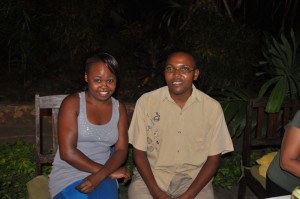
Coralis, Anthony, Joe, Meld
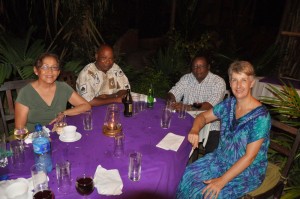
The dancing got more cosmopolitan
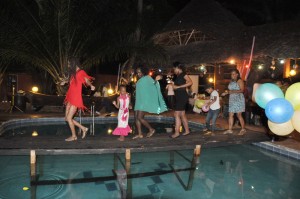
We eventually left about 2:30 and drove home in Joe’s truck through Mtwapa (very interesting at this hour!).
New Year’s Morning we drove to Kikambala then up to Vipingo for lunch with some of Joe’s parishioners. After lunch, Joffrey cooked nyama choma to accompany the beers.
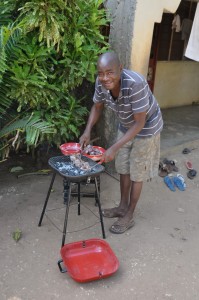
Deacon and Joffrey’s brother in law (deaf / dumb)
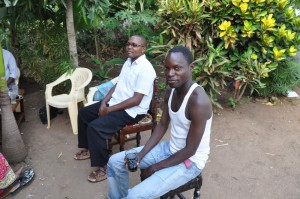
The house, you can see where we sat in the shade with our beers, sodas and nyama choma.
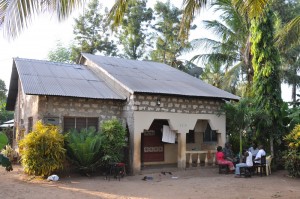
Meld and Joffrey’s wife, Grace.
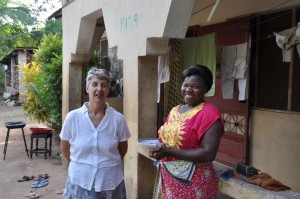
After we returned last night there was a lot of discussion with the owner of the car over the reimbursement of the cost of the new tyre and the bribe we had to pay the police to be allowed on our way on Christmas Eve.
This morning, with Jacob at work, Maggy and I took the car back and had a long and rather heated discussion with the owner and his many friends, the result of which was a little cash now and the promise of more later, but we’re still well out of pocket (and not confident about getting the rest of the promise money).
We then joined Meld and Lucy at Kikambala, and after lunch went to Blue Sky for a swim, sodas, and photos on the beach.
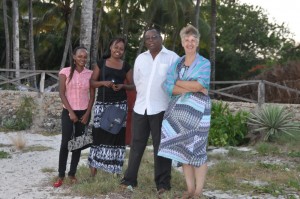
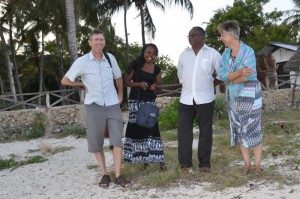
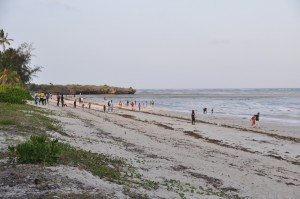
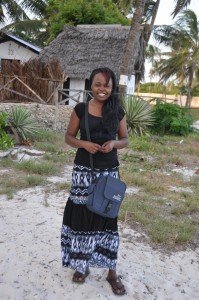
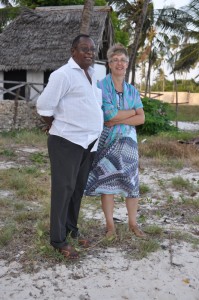
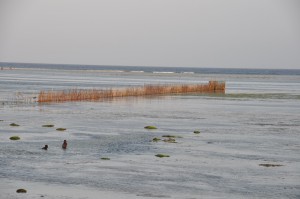
Before we got up, we’d heard birds squawking in the trees, and Meld spotted the green parrots.
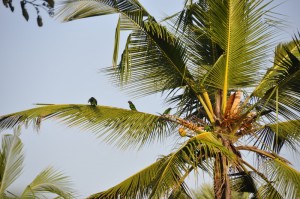
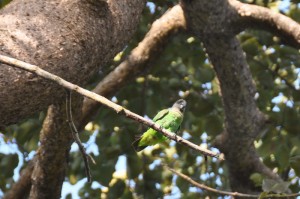
Lucy’s uncle brought his children Margaret and Titus to visit.
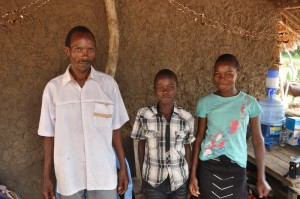
Accompanied by Agostino, Meld and I drove to John Mulwa’s home, which proved to be a long way out from the village on a very rough road. We met his grandmother, cousins and niece.
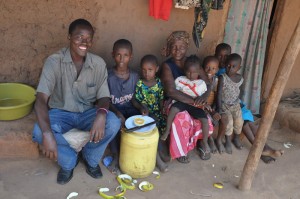
They liked to try on my hat.
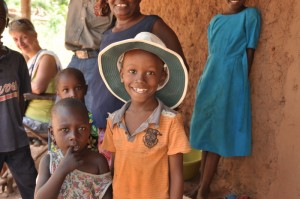
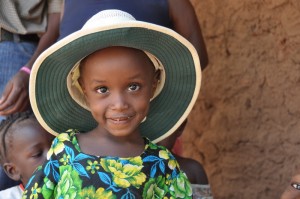
Setting out to return to Mivumoni
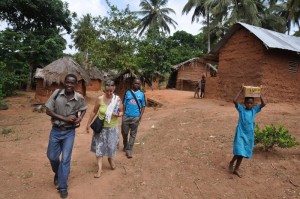
John’s neighbours are building a house by the road.
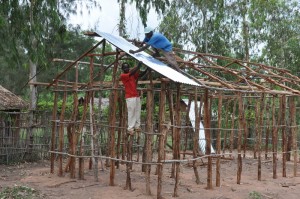
Back at Lucy’s we sat and chatted
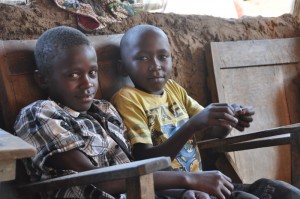
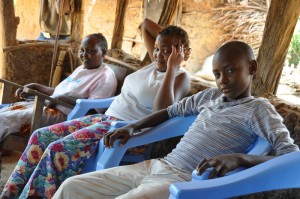
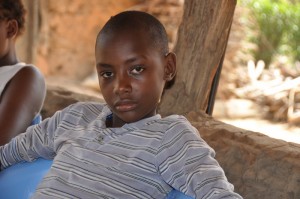
After lunch, with the car loaded, we waited for Mike to return from work so that we could get some group photos (although Japhet was out with the cattle)
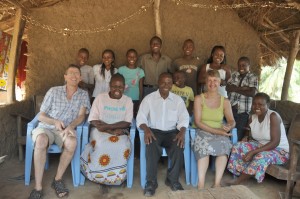
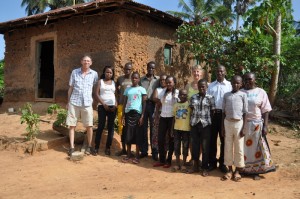
And so we set off, heavily laden. The blue water lilies near Milalani were stunning.
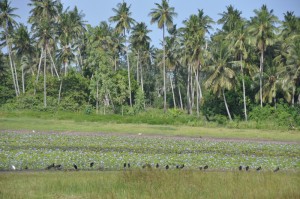
The journey proved quite easy, apart from Mombasa traffic.
Back home we had a few challenges – the gas ran out so we had to move to the charcoal jiko, and big debates with the owner of the car who wants the car back and said “come to the office tomorrow for your money for the tyre and fine” to which he got a resounding “you don’t get your car until we see the money”.
Today’s main activity was a visit to Mike’s workplace, Base Titanium, but before we set out we had to have breakfast – githeri and casava.
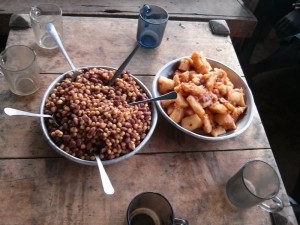
Agostino has become a villa fan.
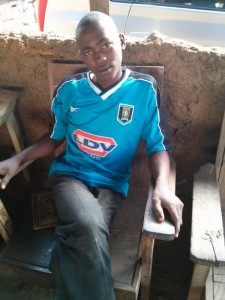
At the titanium plant we only visited the catering section where Mike works, and met his bosses David (pictured) and Brian. Dave gave us a tour of the kitchen and described the operation.
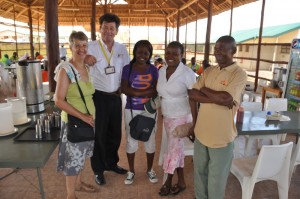
After lunch in the mess we said farewell to Mike.
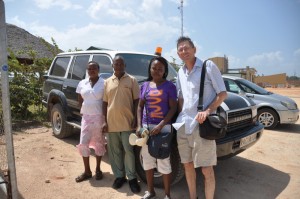
We drove to Ukunda for shopping, and visited the Kamba carving centre. Meld bought a karamba for school, and Ndunge demonstrated how to play it.
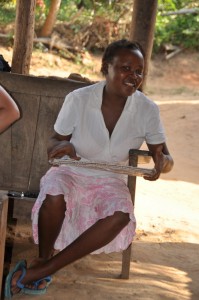
Bixa, used for dyes, grows well here.
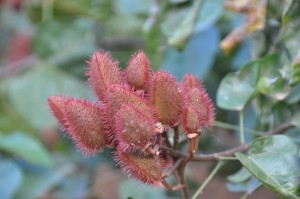
Lucy working again, this time the laundry.
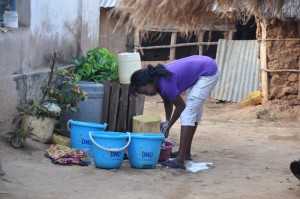
The new bathroom – no more views of the stars as you do your ablutions.
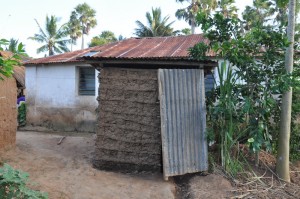
Japhet brings home the goats and a calf.
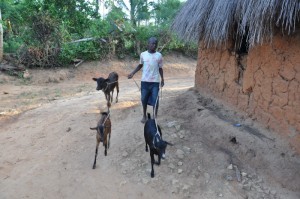
Meld makes sure that Sue’s Christmas decorations are still hanging on the wall – it’s been a bit breezy.

Kennedy and Japhet prepare coconuts.
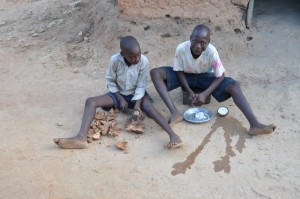
I went with Maggy for a drink at the pub (well, we’d promised the owner we’d return), then back to Maggy’s where Black Jack soon jumped on my lap (having licked my feet).
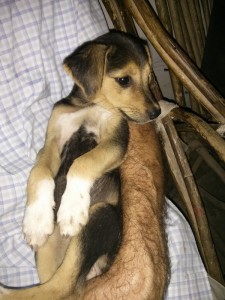
Sitting tasting Maggy’s githeri I suddenly realised I’d left my camera at the pub, so Agostino, Maggy and I hurried back. Nearly to the pub we heard squeals from behind – Black Jack had followed us and was being bitten by the black ants. Maggy had to carry her to the pub and home again, and hold onto her as Agostino and I left.
Back at Lucy’s it was Chapati Party time, accompanied by green grams and potatoes fried in batter (which Meld cooked with Lucy).
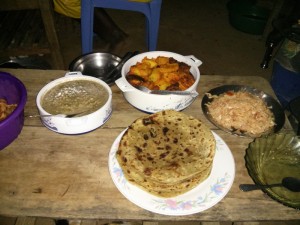
Every morning found Lucy doing the washing up from the night before – it can’t be done in the evening because there is no light. It’s a careful process as all water has to be carried from the spring, so you don’t waste it.
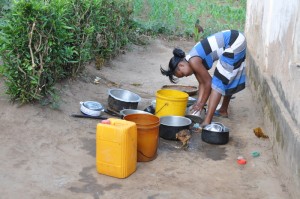
The cattle stay in overnight.

Our car by the sitting room. (OK, this morning we did drive the car to church because we were so late, with lots of people in the back!)
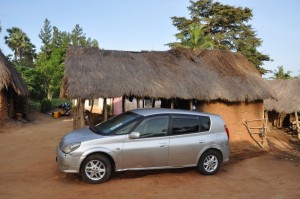
Meld found my bed jumping – and this was who was in it!
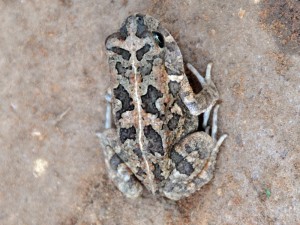
Lucy’s parents took us on a tour of their shamba. The maize is growing well.
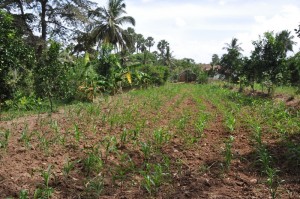
Oranges

Mike explains what they are growing.

Lucy’s mum checks some low-hanging pawpaws.

Bananas.
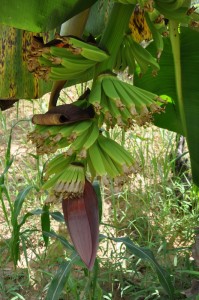
Afterwards we walked to Lucy’s uncle and aunt’s for lunch and a tour of their shamba.This is the store.
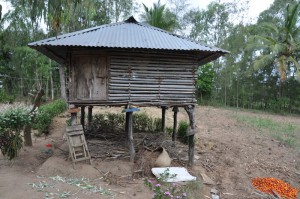
Checking the oranges.
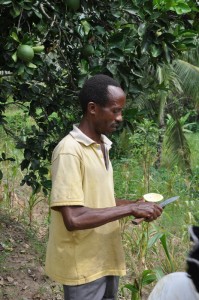
Passion flowers – there were fruit too.
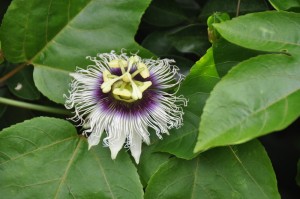
Carrying home the fruit we’d collected.
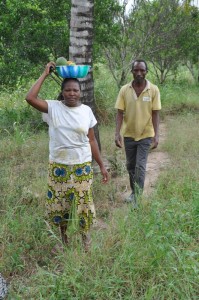
Time to say farewell.

Mivumoni is named for the Mivuma trees which grow here/
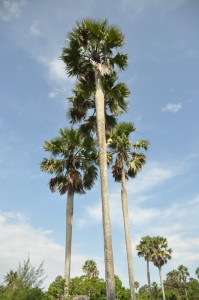
We passed one of the boreholes that we helped to refurbish a few years ago, still working.

Back in Mivumoni, we went for a drink with Mike and meet some of his work colleagues and other villagers.
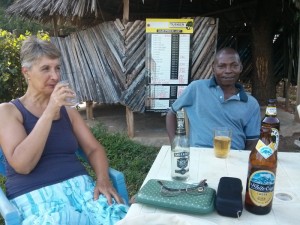
Lucy’s sister Ndunge

We were invited to supper with the St Joseph Sisters, who made us very welcome. Seminarian Gabriel came along too.
